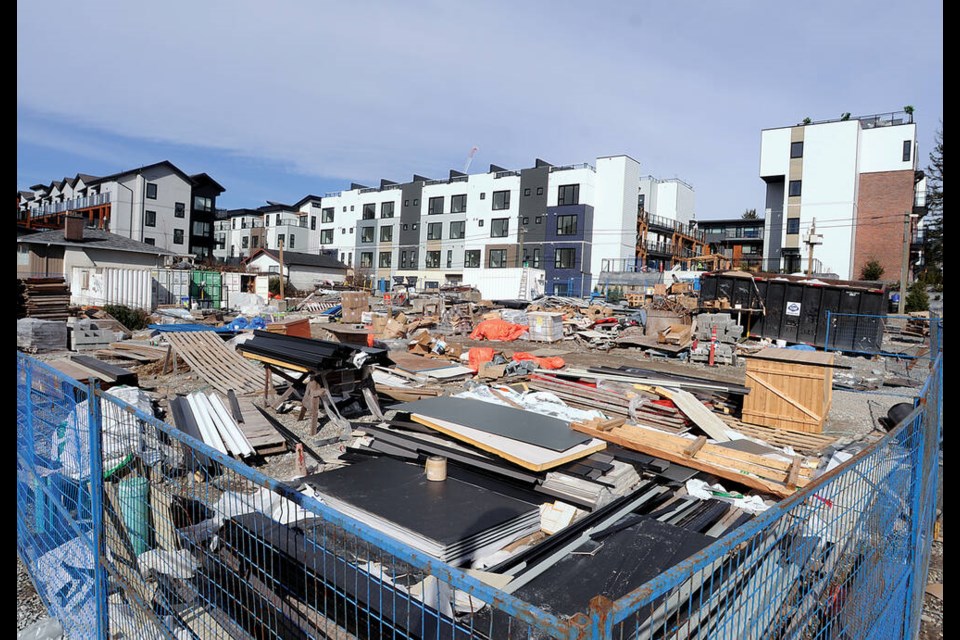A decade after City of North Vancouver council redesigned almost all of the Moodyville neighbourhood for townhomes and mid-rise apartments, the owner of the last undeveloped lots is seeking more height and density.
Council voted unanimously, if reluctantly, Monday to begin a new master planning process for the properties on the 500 and 600 blocks of East First Street, the 600 block of East Second Street and the foot of St. Davids Avenue – collectively known as the Trail Lands.
Wall Financial Corporation purchased the properties from the original owner Seacliff Properties in 2017. Under the current zoning, the developer would be allowed to build up to 50 feet but they have asked the city to consider changing the official community plan for the lands – a request that dredges up a lot of local planning history.
In 2012, City of North Vancouver council approved the controversial Low Level Road project, which led to a cascade of terminal expansions on the industrial waterfront, including a new bank of Richardson International grain silos blocking Moodyville’s views of Burrard Inlet and drastically changing the look and feel of the neighbourhood of roughly 250 homes.
Through the city’s new official community plan process in 2014, the city sought to redraw the neighbourhood with higher density, but the OCP failed to get enough votes and pass at council, making Moodyville one of the issues of the 2014 municipal election. Following the election, a majority of council, including then-Coun. Linda Buchanan, revived the OCP, increased allowable density in the neighbourhood and adopted the plan.
In 2016, the rezonings were finalized, clearing the way for the neighbourhood’s population to quadruple in the decade ahead to roughly 4,000 people, and setting the form and character we see through Moodyville today.
So when Wall Financial came asking for more, Buchanan – now the mayor – acknowledged the baggage that comes with the request.
“I want to be really clear that this rezoning and pre-zoned neighbourhood was fraught with tension in our community,” she said. “The community was quite engaged with what this was going to look like.”
Since eight years had passed from the time Wall purchased the land, Buchanan said she was open to some discussions about changes, but she was adamant that “we’re not going crazy on height. We’re not having tower forms.”
Other members of council expressed a similar sentiment that they had no desire to depart widely from the existing plan.
“The city created Moodyville, and I think it has come together really, really nicely and it looks awesome when you drive down Third Street,” said Coun. Holly Back. “I also hear very, very often positive feedback on the area. I’ve never heard anything negative.”
Coun. Don Bell also noted that the residents who live there today moved into a new neighbourhood that had been designed from scratch, not one poised for change.
“There was an expectation of what that character would look like and the degree to which this application might change that character is something that I think needs careful consideration,” he said.
Council took a brief recess to allow staff to consult with the city’s lawyer on wording for a motion that would carry council’s intent without prejudicing the process. Ultimately, they agreed to lead the new master planning process “generally in keeping with the form and character of the Moodyville neighbourhood plan and design guidelines.”
“I think that’s very important given, probably, the scars that many of us wear still from this previous OCP amendment,” Buchanan said.



